- Getting ready to hit the road!
- Some thoughts on Hong Kong…
- A day in Danang and Hue, Vietnam
- Saigon River and Saigon, Vietnam
- Siem Reap and Temples, Cambodia
- The Floating Village — Kompong Phluk, Cambodia
- Phnom Penh and the road to Sihanoukville, Cambodia
- Bangkok, Thailand
- Day 2 in Bangkok — Ayutthaya, Thailand
- Singapore
- Langkawi Island, Malaysia
- Phuket, Thailand — or sort of…
- New Delhi, India
- Agra and the Taj Mahal
- The road to — and Jaipur, India
- India — a few closing thoughts.
- Dubai, United Arab Emirates
- Oman (The Sultanate of)
- Luxor, Karnak, and the Valley of the Kings, Egypt
- Petra, Jordan
- Sharm el Sheik and St. Catherine’s Monastery, Egypt
- Cairo and Giza, Egypt
- Egypt — Some final thoughts…
- Zooming around Israel
- Bodrum, Kusadasi, and Ephesus, Turkey
- Corfu, Greece
- Dubrovnik and Zadar, Croatia
- Venice, Italy — the last hurrah!
Just to start the confusion, should I say Delhi or New Dehli? Well, according to the locals, New Delhi is the proper overarching name; if you say Delhi, it means Old Delhi – even though Old Delhi is part of New Delhi. Got that? Yeah, neither do I.
New Delhi was the first of our India surprises. We had the typical impression of what New Delhi would be like – hot, crowded, impoverished, etc. To our pleasant surprise, New Delhi was a wonderful city – mixing old and new, historical and current culture, crowded and developed areas and lots of greenbelts. It was this latter trait (greenbelts) that really shocked us. Despite being one of the largest urban centers in the world (and one of the fastest growing), the amount of urban planning put into New Delhi (starting largely by the British after they decided to move India’s capital there) has preserved huge tracts of green space in the city. Here you can see some truly leading edge modern architecture and then visit what was leading edge architecture in the 1200s. When you drive around the city, you realize just how old it is. The current city is built around (or on top of) seven ancient cities – many of which are still around. Not all of these old cities have been preserved and we found out that one of the sites has turned into a make out site for couples since any form of PDA (public displays of affection) are frowned upon!
We spent a very full day touring around the city and learned a lot about the culture. Unfortunately, it was Monday (many of the museums are closed), but we still saw a lot. I guess you can’t visit Delhi without visiting Old Delhi, complete with its narrow streets and alleyways that are crowded with markets, shops, and a LOT of people. We took the easy way out by riding in a bicycle rickshaw. This truly was sensory overload, but it was fabulous. While in Old Delhi, we also visited the Jama Masjid Mosque, one of the largest mosques in India. Of course there, as in many other parts of India, the poverty becomes
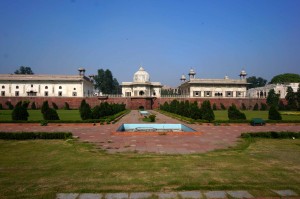
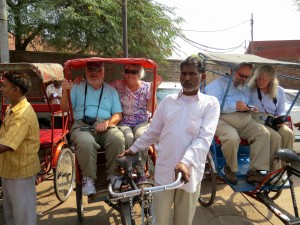
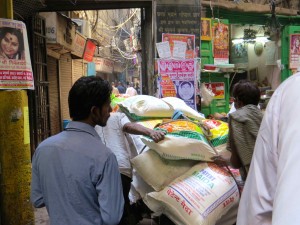
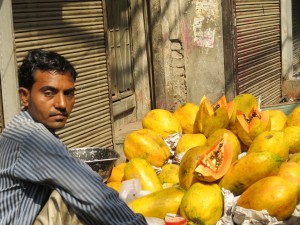
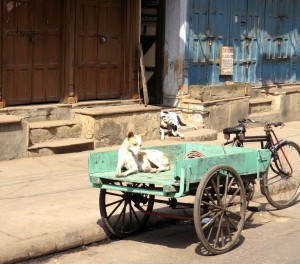
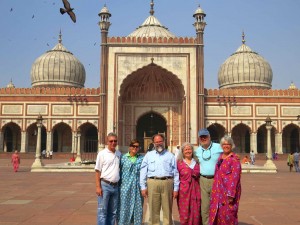
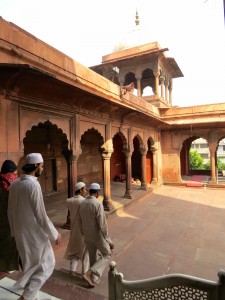

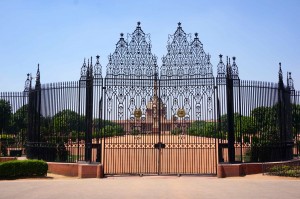
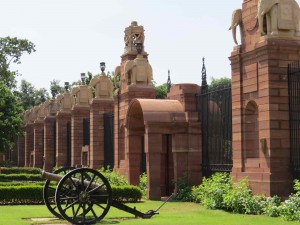
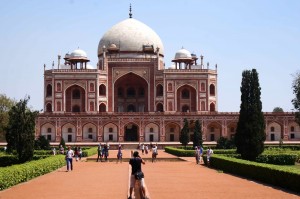
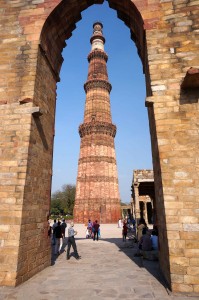
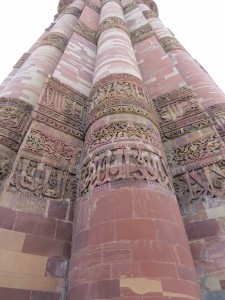
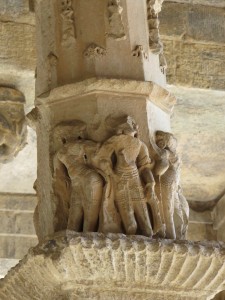
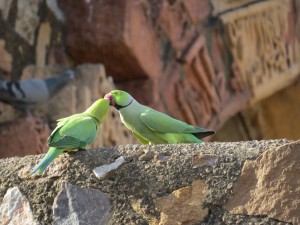

apparent and lots of people are begging and/or trying to sell you things. We see some of this in Mexico, but here it is on a larger scale and quite a bit more aggressive. It was hard to say “no,” but not doing so would bring down hordes of others. There is also a sentiment that giving people money only sustains the cycle of begging. Much of India brags that the government will provide an education and a job to anyone who wants one.
We also visited the Raj Ghat, the site of Mahatma Gandhi’s cremation. This is a very peaceful place that is visited not only by Indians, but also people and dignitaries from across the globe. We spent much of the rest of the day visiting both modern day (e.g., since the British) and very old buildings and sites, including Humayun’s Tomb (actually built for his widow) that is a UNESCO World Heritage site built in the mid 1500s that ultimately became somewhat of a model for the design of the Taj Mahal. We also visited the Qutub Minar, an amazing fluted sandstone tower that rises to nearly 250 feet that was built during the 1200s and 1300s. This was a little reminder of the Muslim’s defeat of the Hindus. The amazing thing is that there was no scaffolding that could go that high at the time, so everything had to be brought up by ramp. Alright all you geometry people, figure out how long the ramp had to be to make it up that kind of an incline (some people said it was over 2 miles long!).
One last thing to mention — the food. Everyone in my family knows that I have been on a self-imposed Indian food boycott for several years. This has been a great disappointment to them. Well, the ban is lifted! While still not in my Top 3 favorite foods, we had a number of excellent Indian meals while in New Delhi (and the rest of India), so it will now become part our repertoire.
Adieu for now!
This entry was posted in India, Travel

